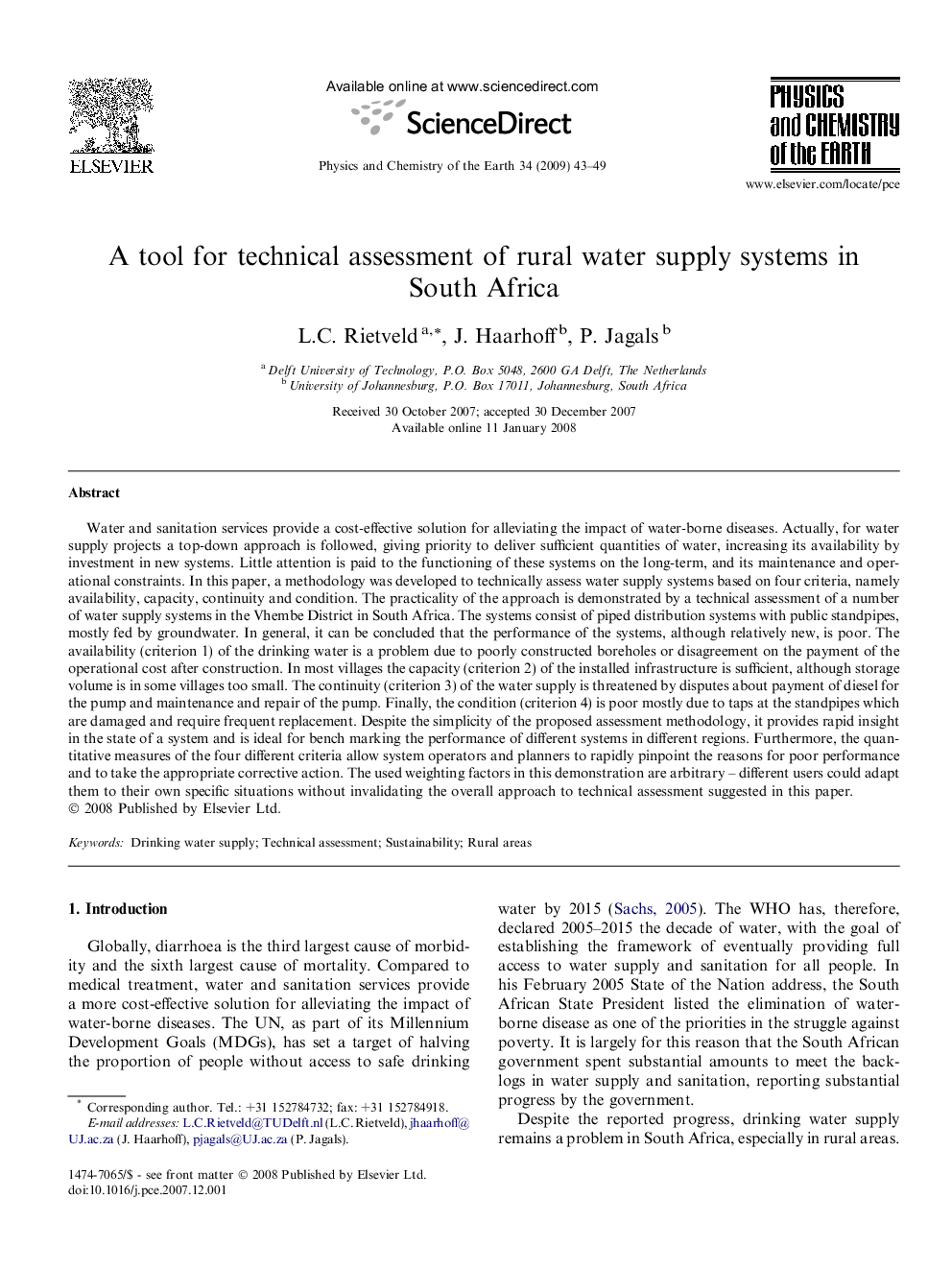| Article ID | Journal | Published Year | Pages | File Type |
|---|---|---|---|---|
| 4721376 | Physics and Chemistry of the Earth, Parts A/B/C | 2009 | 7 Pages |
Water and sanitation services provide a cost-effective solution for alleviating the impact of water-borne diseases. Actually, for water supply projects a top-down approach is followed, giving priority to deliver sufficient quantities of water, increasing its availability by investment in new systems. Little attention is paid to the functioning of these systems on the long-term, and its maintenance and operational constraints. In this paper, a methodology was developed to technically assess water supply systems based on four criteria, namely availability, capacity, continuity and condition. The practicality of the approach is demonstrated by a technical assessment of a number of water supply systems in the Vhembe District in South Africa. The systems consist of piped distribution systems with public standpipes, mostly fed by groundwater. In general, it can be concluded that the performance of the systems, although relatively new, is poor. The availability (criterion 1) of the drinking water is a problem due to poorly constructed boreholes or disagreement on the payment of the operational cost after construction. In most villages the capacity (criterion 2) of the installed infrastructure is sufficient, although storage volume is in some villages too small. The continuity (criterion 3) of the water supply is threatened by disputes about payment of diesel for the pump and maintenance and repair of the pump. Finally, the condition (criterion 4) is poor mostly due to taps at the standpipes which are damaged and require frequent replacement. Despite the simplicity of the proposed assessment methodology, it provides rapid insight in the state of a system and is ideal for bench marking the performance of different systems in different regions. Furthermore, the quantitative measures of the four different criteria allow system operators and planners to rapidly pinpoint the reasons for poor performance and to take the appropriate corrective action. The used weighting factors in this demonstration are arbitrary – different users could adapt them to their own specific situations without invalidating the overall approach to technical assessment suggested in this paper.
